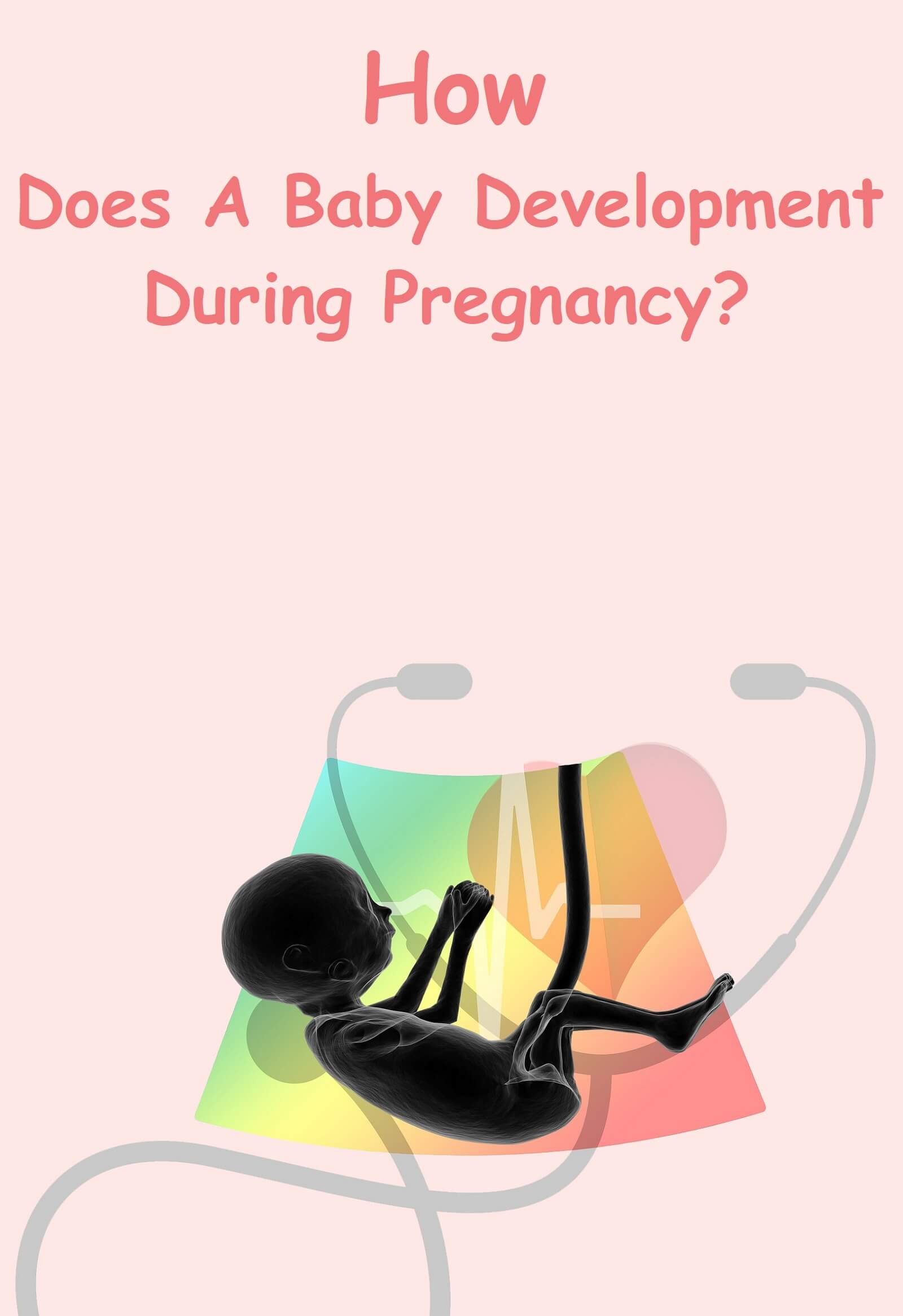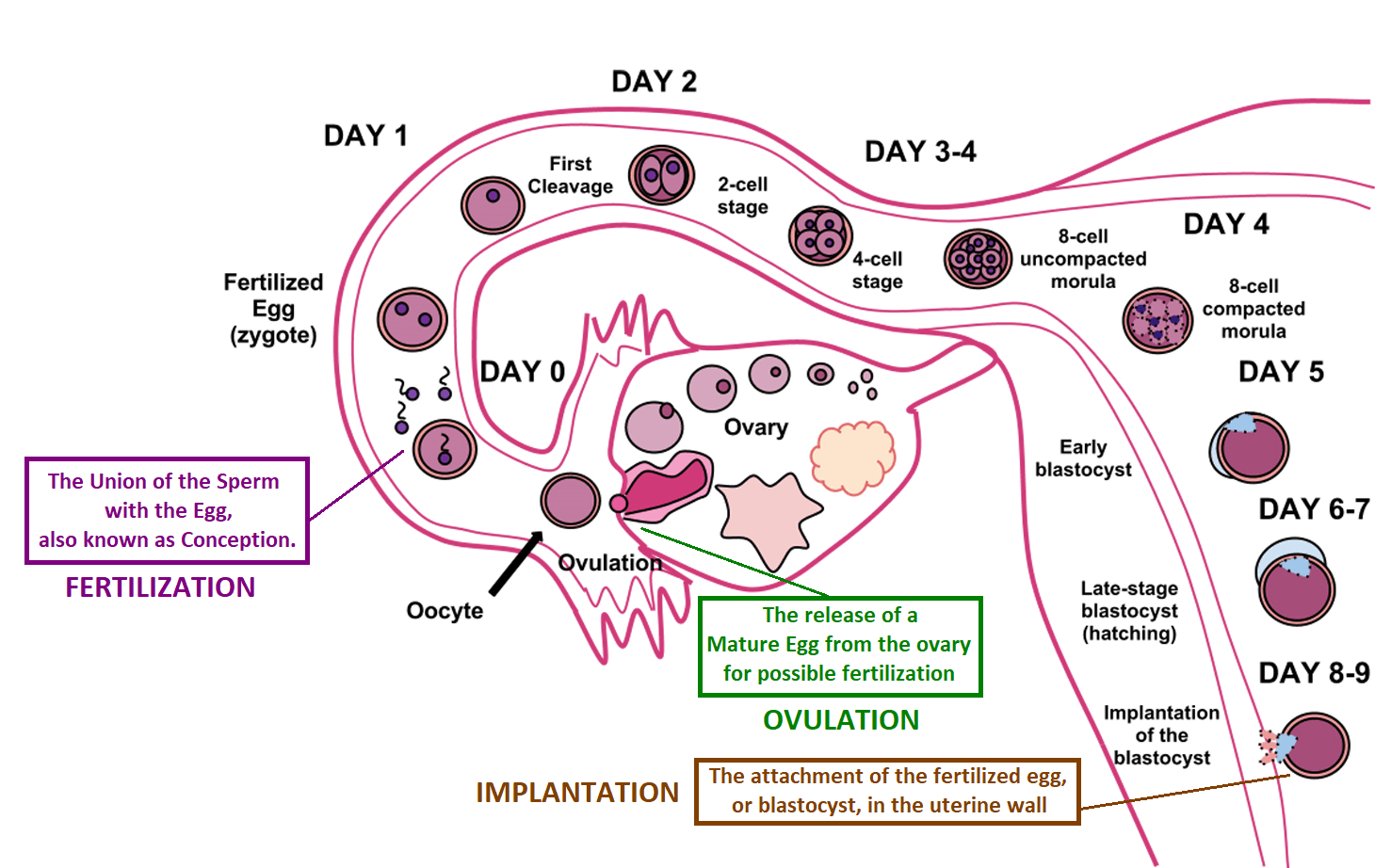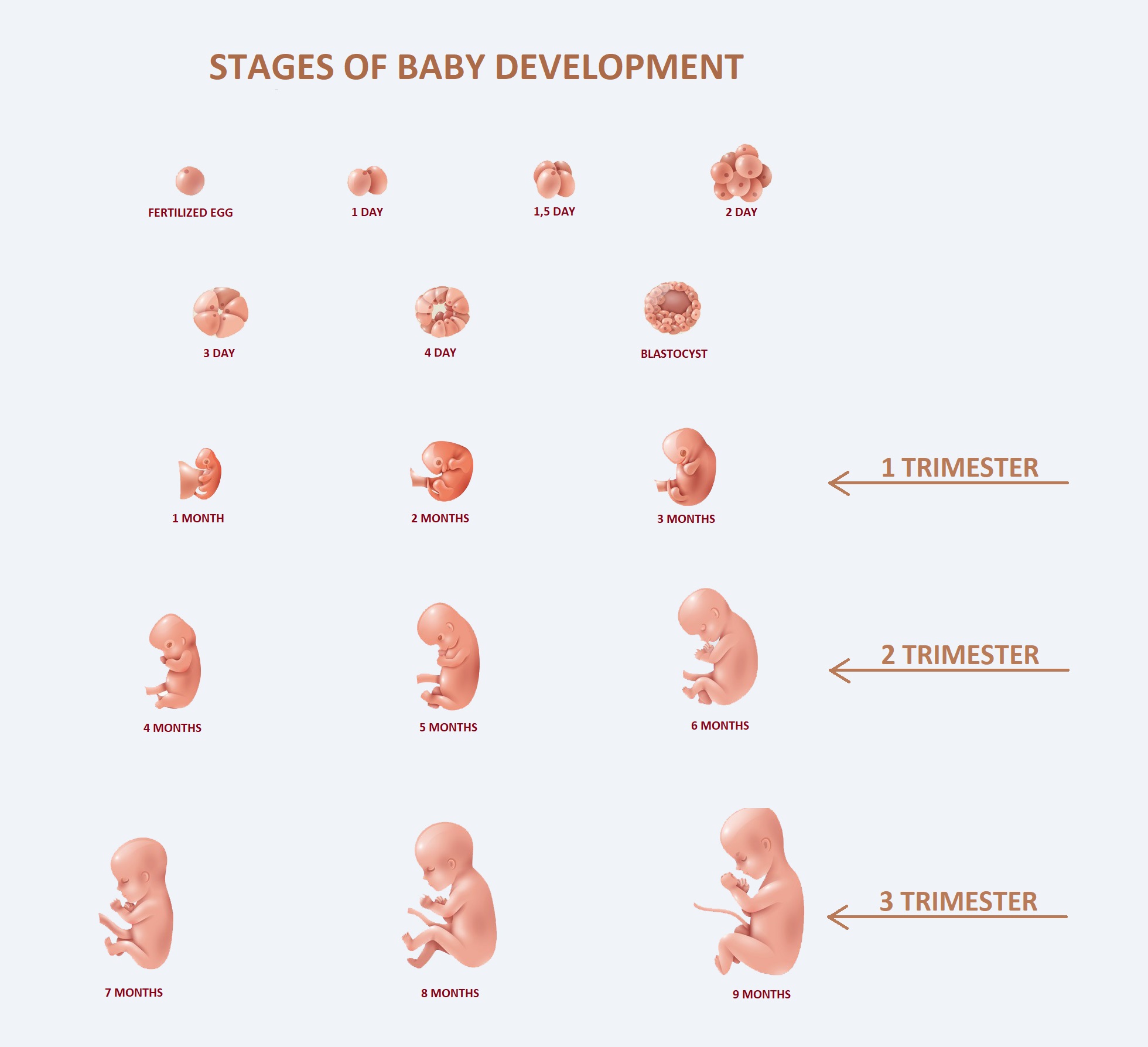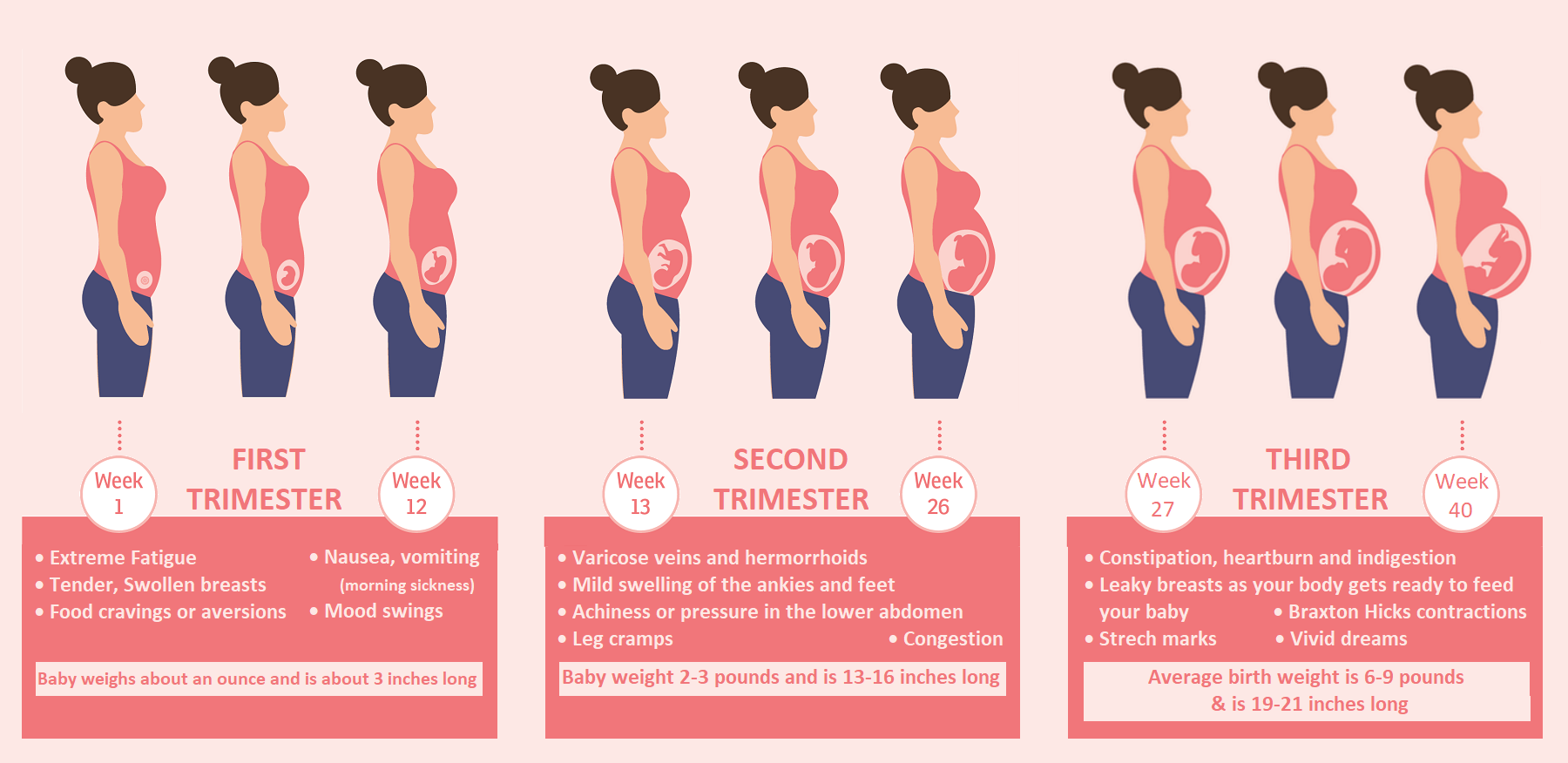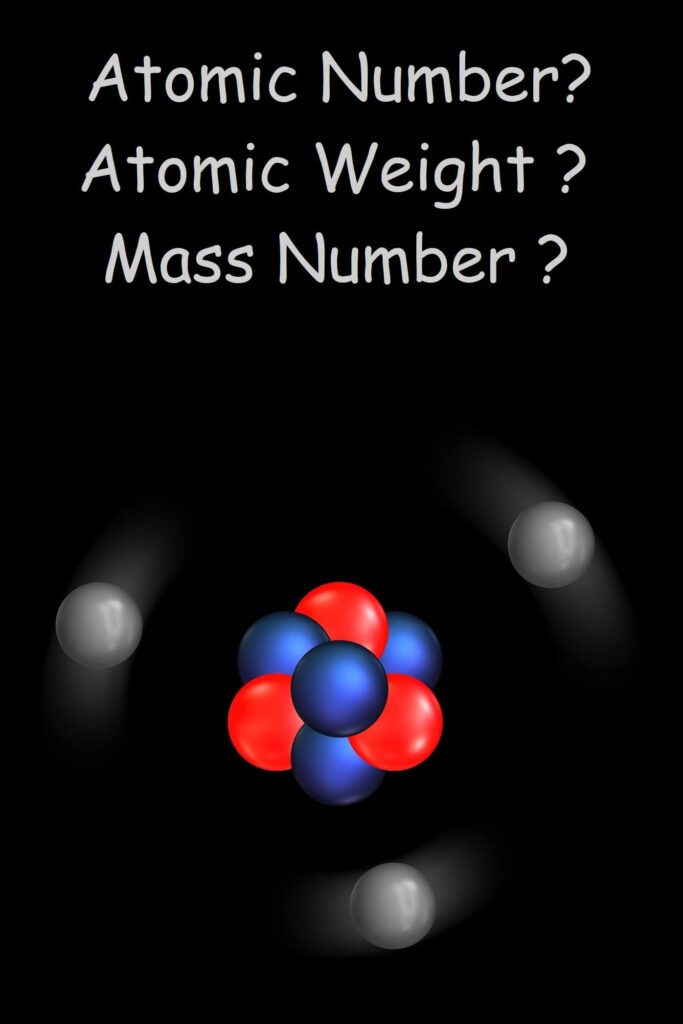Baby (Fetal) Development In First Second and Third Trimester
CONTENT INDEX
What is Baby or Fetal Development?
Babies change significantly during normal pregnancy, which time is divided into three stages called trimester. So, when you’re 3 months pregnant, you have about 12 weeks, and every 3 months you see important changes in you and your baby. Anyway, this is not always true. A full pregnancy lasts 40 weeks or 280 days, Depending on your gestational months (some short, others long) and gestational weeks, it can be 9 or 10 months. It’s perfectly normal and healthy, and you may hear different names during childbirth as you approach the end of your pregnancy. This tag spoils the last few weeks of pregnancy. They also look for side effects in children. Babies born early or late may be at a higher risk of developing breathing, hearing, or learning problems after a few weeks than babies born full-time.
The first week (38) is followed by two digits separated by a bar (6,7). This is the number of days you are currently in the gestational week. So if you see 38 6 / 7, it means it is the sixth day of the 38th week.
The last weeks of pregnancy are divided into the following groups:
- Preterm birth: 37 0/7 weeks to 38 6/7 weeks.
- Full semester: 39 0/7 weeks to 40 6/7 weeks.
- Later period: 41 0/7 weeks to 41 6/7 weeks.
- Later period: 42 0/7 weeks and above.
1st First Trimester of Pregnancy
The monthly growth phase of the first trimester of pregnancy lasts for 12 weeks through the first trimester. This is usually the first part of pregnancy. During this third month of pregnancy, the baby transforms from a collection of tiny cells into an embryo and begins to incorporate the characteristics of the baby. As the fertilized egg develops in the first month (1 to 4 weeks), a hard pouch forms around it and gradually fills with fluid. This is called the amniotic membrane and supports the growth of the embryo from which the placenta is also formed.
- The placenta is a round, flat shaped organ which carries nutrients from mother to baby and discharges baby products. placenta is worked as a food source for a pregnant baby. During the first few weeks, your first face will form a large circle in front of you. The mouth, throat and lower jaw is developed. Blood cells are formed and blood circulation begins.
- In the end of four weeks, the small “heart” tube beats 65 beats per minute, and in the end of the first month, babies’ size are 1/4 inch long, smaller than a grain of rice.
Characteristics of a 2nd Month (5-8 Weeks): Baby are still developing. Each ear starts develop with a small fold of skin on the side of the head. Small buds form and eventually grow on the arms and legs.
Fingers, toes, and eyes are also shaped and well-formed with neural tubes (the nervous system of the brain, spinal cord, and other central nervous systems). Digestive system and senses also begin to develop.
Bones begin to replace cartilage, at which point your baby’s head is larger than the rest of the body.
A baby’s heart rate can usually be detected after about 6 weeks, at 8 weeks the baby is said to be a fetus and not an embryo, and by the end of two months the baby will be about an inch long and weighs about an 1/30 of ounce.
At 3rd months (9-12 weeks): Your baby’s arms, hands, toes, feet, and fingers are fully developed. At this point, the child begins navigating, for example, by opening and closing their fists and mouth. Nails and toes begin to grow and the outer ear begins to form. Teeth start under the gums.
The baby’s sexual organs are also developing, but the baby’s gender is barely visible on ultrasound, and by the end of the third month, the baby is fully formed. All organs and limbs exist and continue to function. The baby’s circulatory and urinary systems also function, and the liver releases a liquid juice which is called as bile juice. In the end of the third month, the baby size is about 4 inches long and weighs about 1 ounce.
The abortion rate fell sharply for the first time in three months since the second half of the year. At this time, the morning sickness disappears and the symptoms of early pregnancy disappear. Baby’s facial features will begin to develop this month. You may also feel movement as your baby twists or bends in the womb. This usually occurs for up to about 20 weeks during an autopsy (an ultrasound to check the baby’s physical development).
What should Eat or Avoid during Pregnancy (9 months diet plan)?
2nd Second Trimester of Pregnancy
4th months (13-16 weeks): We can hear baby’s heartbeat with a device called a Doppler. Fingers and toes are well marked. eyelashes, eyebrows, eyelashes, nails and hair are developed. Teeth and bones become thicken. Babies can also stretch their thumbs to suck, yawn, and grimace, and their nervous system begins to function. By the end of the fourth month, your baby size is about 6 inches long and weight about 4 oz.
5th month (weeks 17-20): At this stage, baby Hair starts to grow on the baby’s head. The baby’s arms, back and temples are covered with soft bristles called lanugo. This hair protects your baby, and it usually falls out at the end of the first week after the baby is born. The baby’s skin is covered with a white coating called vernix caseosa. This “sticky” substance is thought to protect your baby’s skin from prolonged exposure to amniotic fluid. This layer comes off before birth. In the end of the fifth month, the baby size is about 10 inches long and weighs between 1/2 and 1 pounds.
6th months (21-24 weeks): baby’s skin is red and wrinkled, and blood vessels can be seen through the baby’s translucent skin. The baby’s fingerprints and footprints are clearly visible. At this stage, the eyelids begin to open and the eyes open. Babies respond to sound by moving or increasing their pulse. If baby is hiccupping, you may notice that his movements are uneven. If you are born prematurely, your baby can survive in intensive care for more than 23 weeks. In this month, your baby size is about 12 inches long and weighs about 2 pounds.
3rd Third Trimester of Pregnancy
It is the last part of pregnancy. You may want to count down to the deadline and arrive early, but it will help you prepare for your baby’s birth every week from the last stage of this development. At the end of pregnancy, your baby will quickly gain weight and body fat. This will help after childbirth in culture only mentions 9 months of pregnancy, but in reality, it could be 10 months. A normal full pregnancy lasts 40 weeks and can last up to 10 months. There may be a delay of 1-2 weeks (41 weeks or 42 weeks).
7th months (25-28 weeks): baby continues to mature and accumulate fat. At this stage, your baby can hear properly. Babies frequently change positions and respond to stimuli such as noise, pain, and light. Amniotic fluid begins to clear. So, in the case of premature birth, babies are more likely to survive at 7 months, and by the end of 7 months, babies are about 14 inches long and weigh 2-4
At 8 months (29-32 weeks): your baby continues to mature and accumulate fat. You may notice that your baby kicks more. At this point, the baby’s brain is developing rapidly and the baby can see and hear. Most internal systems are well developed, but the lungs may remain immature. Babies are about 18 inches long, weigh up to 5 pounds.
At 9months (33-36 weeks): babies continue to grow and mature. and will continue to exist. At this point the lungs are almost fully developed and the baby’s reflexes are tuned to respond to sounds, light and touch by blinking, closing eyes, turning head, and standing up. They are about 17-19 inches long and weigh 5-6 pounds.
At 10 months (37-40 weeks) You can have a baby at any time this month. Space constraints may make your baby less active. At this point, your baby’s position may change to prepare for labor. Ideally, the baby’s head is in the womb. During this final stage, your baby may feel discomfort as they descend into the pelvis and prepare for labor.
by Poonam chhapola
